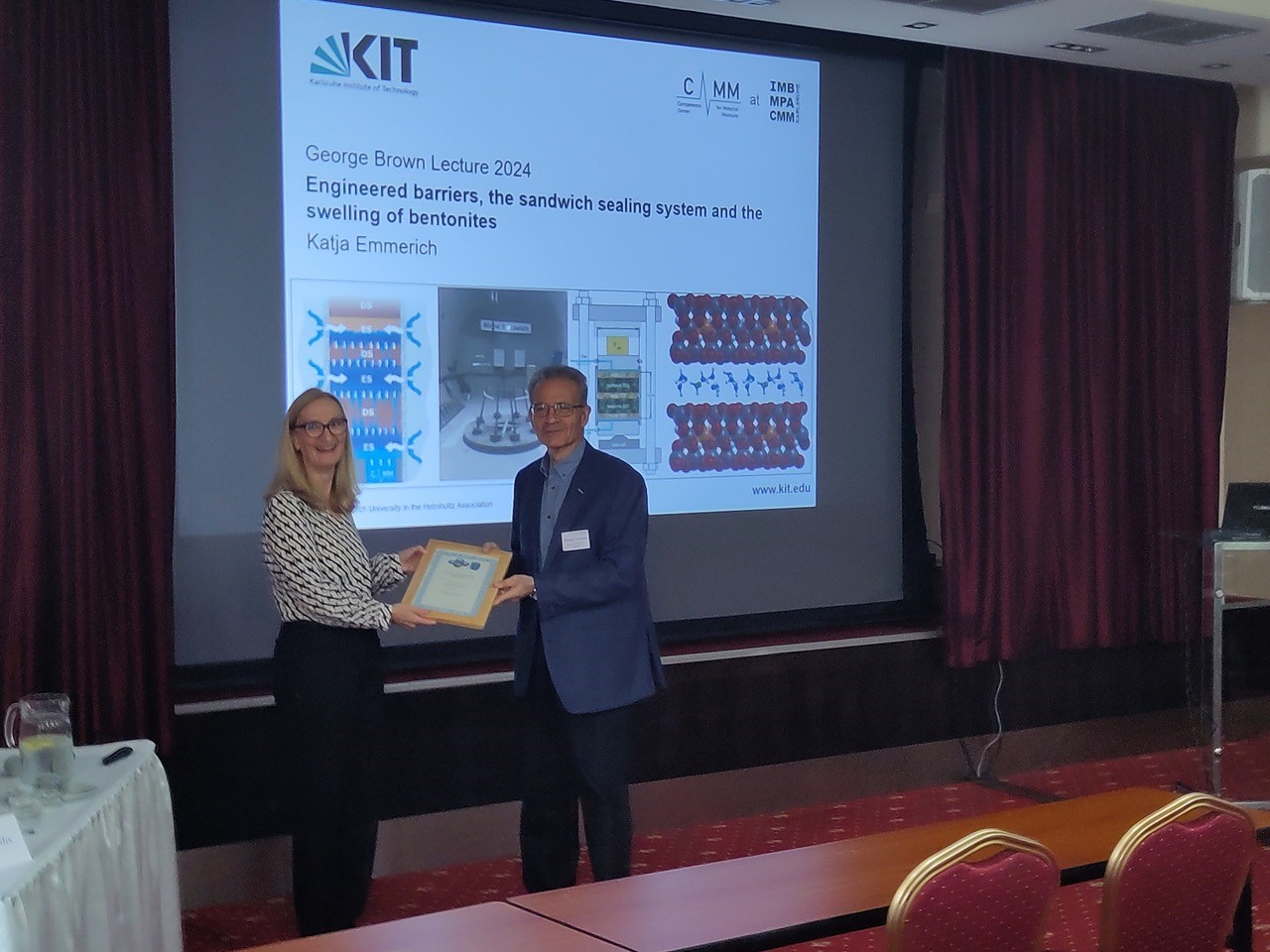
13 - 18 July 2025
Trinity College Dublin
18th International Clay Conference, Dublin
Abstract deadline: 11 April 2025
6 - 11 July 2025
Goldschmidt Conference, Prague
Early registration deadline: 21 May 2025
Prague Congress Centre
8 - 10 April 2025
Geochemistry Group RiP 2025, Birmingham
Online attendance registration only now
University of Birmingham
Funding is available to support researchers and postgraduate students who wish to attend and present their research on clay minerals at conferences, workshops, and similar events. Awards are capped at £500 or 50% of the total costs, whichever is lower, and are disbursed retrospectively. There are no restrictions on eligibility, and applications for bursaries can be submitted at any time throughout the year.
Application link: https://www.minersoc.org/clay-minerals-group-bursary.html

Deep geological disposal of high-level radioactive waste by applying the multi-barrier concept is a widely international consensus. The components of the engineered barrier system (EBS), that comprises buffer and backfills as well as sealings, are designed in most national concepts containing compacted bentonite. The particularities of the safety relevant properties and the THMC behaviour depend on the position of the bentonite in the EBS. Thereby the swelling pressure of bentonite in EBS is a performance measure and design criteria.
The study of THMC processes in EBS is an interdisciplinary task for joint research by scientists and engineers. The solid foundation for this interdisciplinary work is the proper understanding of the various aspects of the subject and the correct use of terminology. George Brown was a staunch proponent of this notion [1] in research. However, this represents a major challenge in the present age of temporary contracts in research, as there is limited time available for thorough familiarization with such a complex topic, which hinders communication and slowing down progress. New research results require a constant reassessment of the current state of knowledge to ensure that the knowledge from previous research is not lost.
The research of my group is focused on the structure-functionality relation of clays and clay minerals in various (geo-)technical applications. Thereby characterisation of intrinsic clay properties by mineralogical and chemical methods and identification as well as scientific understanding of THMC processes by various experiments and modelling that influence these intrinsic properties are our objectives. Hydraulic sealings of shafts and drifts as part of the EBS in radioactive waste deposits is one important topic.
The sandwich sealing system was developed by KIT as part of drift and shaft seals for hydraulic separation of aquifers and to block potential pathways of radionuclides between a nuclear waste repository and the biosphere. It consists of sealings segments (DS) sandwiched by equipotential segments (ES). DS are built of a binary mixture of compacted bentonite. The ES are characterized by a higher hydraulic conductivity than the DS and preferential flow paths of fluid during hydration are interrupted in ES. Fluid is evenly distributed over the cross section of the seal in the ES and available for hydration of adjacent DS resulting inhomogenous hydration, swelling and sealing. The functionality of the system has been demonstrated in semi-technical tests, and an in-situ experiment is performed at the Mont Terri rock laboratory (CH) to investigate the interaction between the sandwich sealing system and a potential clay host rock [2, 3].
A still open question thereby is the precise and accurate measurement and prediction of the swelling pressure of compacted bentonite under the inflow of different pore fluids.Knowledge of the variety in the structure of swellable minerals (smectites) [4] as main components of bentonites and their hydration behaviour in dependence of water content during installation as well as cation exchange processes in the interlayer by cations from pore fluid will help us to understand the process of pore distribution and swelling pressure development beyond a simple relation to the dry density. Furthermore, consideration e.g., of friction in laboratory measurements compared to rock surfaces could improve the precision and accuracy of these measurements.
References:
[1] I.G. Wood (1996) George Brown 1926-1996. Clay Minerals 31,435-436
[2] Emmerich et al.(2020) Vertical hydraulic sealing system based on the sandwich principle - reproject (Sandwich-VP). Final report, https://doi.org/10.2314/KXP:1692488228
[3] Wieczorek et al.(2023) Sandwich-HP - Vertical Hydraulic Sandwich Sealing System. Final report, https://doi.org/10.2314/KXP:1898330905
[4] Emmerich et al.(2009) Clay profiling: The classification of montmorillonites. Clays and Clay Minerals 57, 104–114.

Fig. 1. The structure-functionality relation in bentonite in engineered barrier systems in general and drift seals executed as a sandwich-sealing system (credit for sketch: E. Bakker). The interrelation of the bentonite material from the quarry (credit for picture: A. Gilg, TU Munich) to compacted bentonite, swelling of bentonite in dependence of pore fluid and change of interlayer porosity due to hydration of swellable clay minerals.
This and all other “Clay Scientist Interviews” can also be found on the CMG website: https://www.minersoc.org/jubilee-interviews.html

Image reproduced from the ‘Images of Clay Archive’ of the Mineralogical Society of Great Britain & Ireland and The Clay Minerals Society (https://www.minersoc.org/images-of-clay.html)